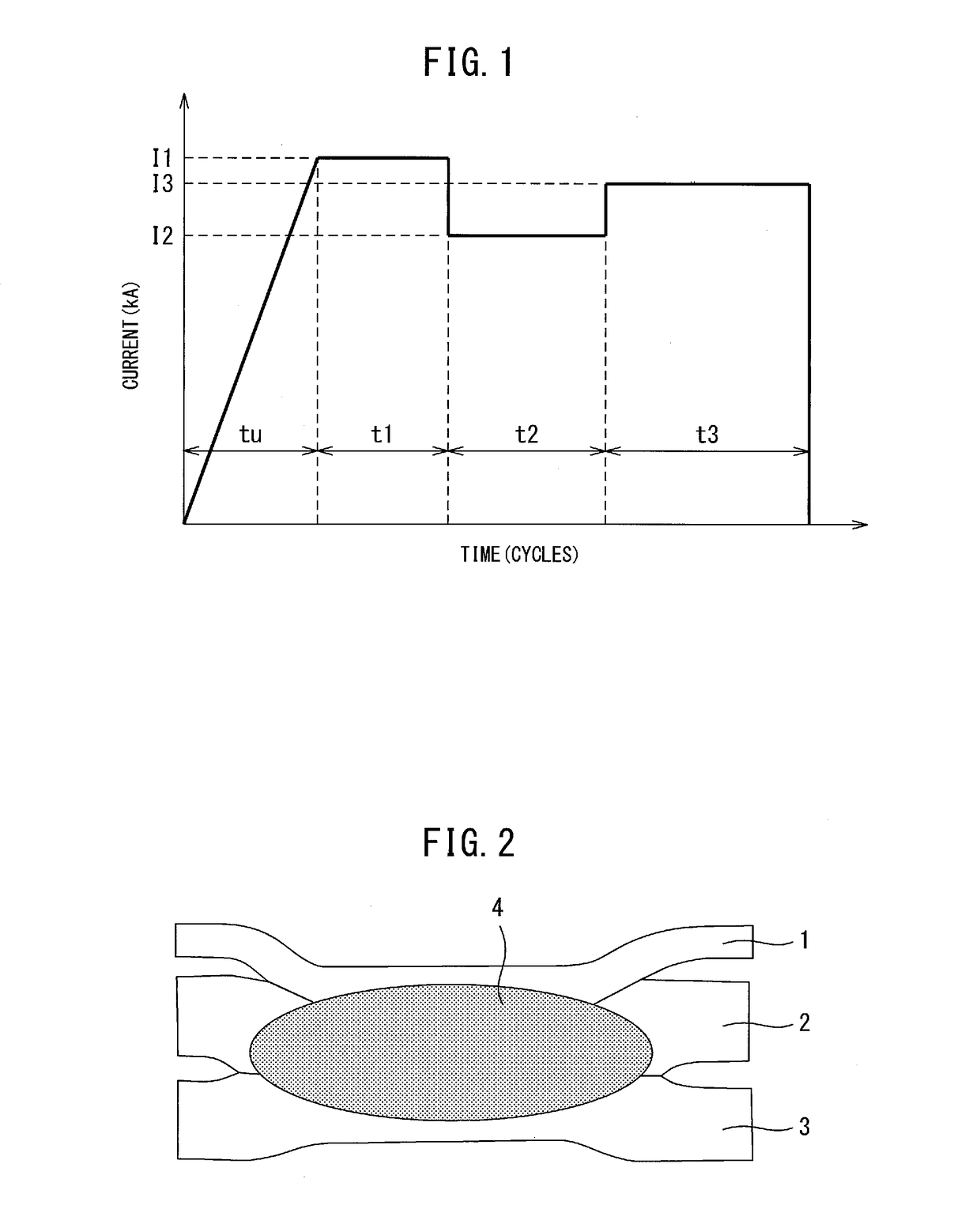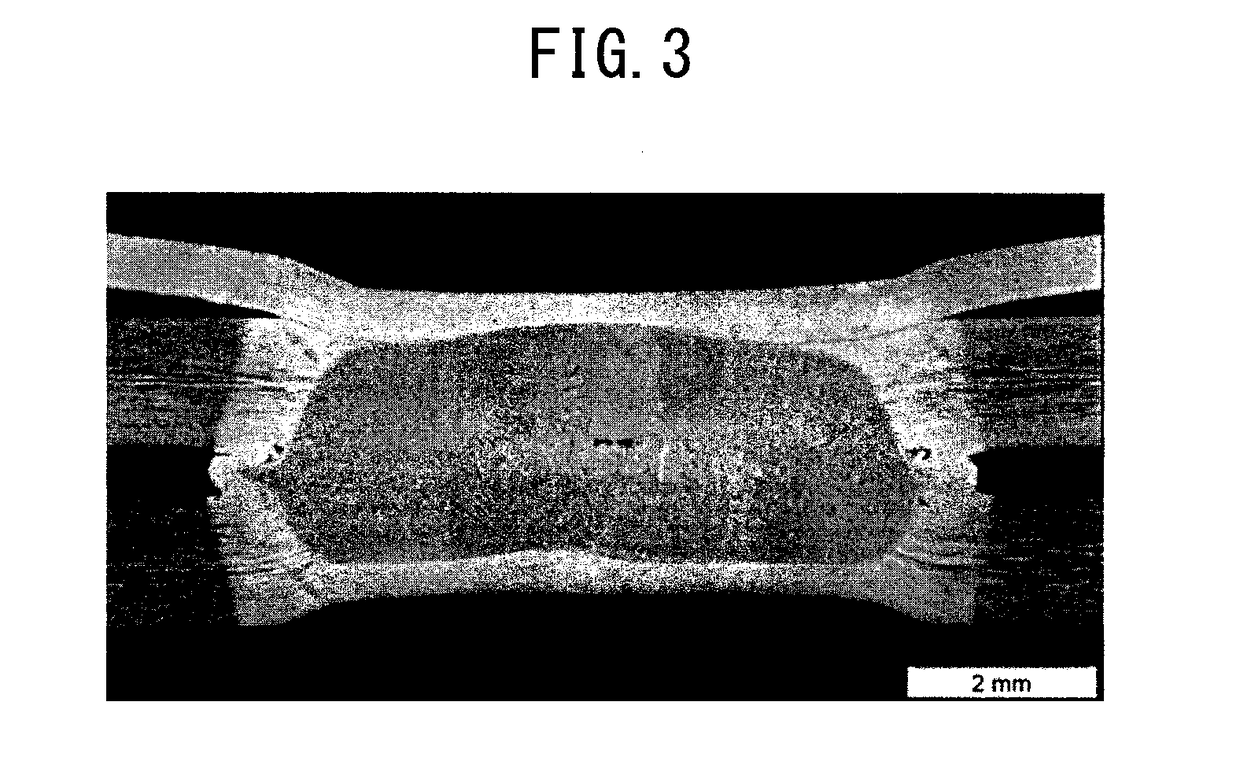Spot welding method
a welding method and welding plate technology, applied in welding/soldering/cutting articles, manufacturing tools, transportation and packaging, etc., can solve the problems of insufficient formation of the splint (weld metal), low pressing force at the time of the first stage of welding, and inability to obtain the desired joint strength
- Summary
- Abstract
- Description
- Claims
- Application Information
AI Technical Summary
Benefits of technology
Problems solved by technology
Method used
Image
Examples
example 1
[0107]Using the two types of sets of sheets shown in Table 1, spot welding was performed. The steel sheets were all galvannealed steel sheets. The amount of deposition per side was 45 g / m2. The spot welding conditions are shown in Table 2. For the welding power source, a single phase alternating current was used.
[0108]For the electrodes, a Cr—Cu DR type having a nominal size of 16 mm, a tip diameter of 6 mm, and a tip R of 40 mm was used. The electrode holding time after three stages of conduction was made 5 cycles in all cases. After welding, the set of sheets was cut along a line passing through the center of the spot welding. The cut surface was polished and etched, then the size of the nugget was measured by an optical microscope. The measurement results are shown in Table 3 together with the occurrence of expulsion. A nugget of (Nugget size between Steel Sheets 1 and 2) ≧4×√ (sheet thickness of Steel Sheet 1) was judged as passing.
example 2
[0109]Under the same conditions as Example 1, spot welding was performed by the conduction pattern and pressing force pattern of FIG. 5. The spot welding conditions and results of evaluation are shown in Table 4. For the welding power source, single-phase alternating current was used.
[0110]As a result, no expulsion occurred and a good nugget was formed. Note that, a nugget of a nugget size between steel sheets of ≧4×√ (sheet thickness of Steel Sheet 1 (thinnest steel sheet)) was judged as passing. Below, the same criteria were used for judgment in Examples 3, 4, and 5 as well.
example 3
[0111]Under the same conditions as Example 1, spot welding was performed by the conduction pattern and pressing force pattern of FIG. 6. The spot welding conditions and results of evaluation are shown in Table 5. For the welding power source, single-phase alternating current was used.
[0112]As a result, no expulsion occurred and a good nugget was formed.
PUM
| Property | Measurement | Unit |
|---|---|---|
| thickness | aaaaa | aaaaa |
| current | aaaaa | aaaaa |
| thickness | aaaaa | aaaaa |
Abstract
Description
Claims
Application Information
 Login to View More
Login to View More - R&D
- Intellectual Property
- Life Sciences
- Materials
- Tech Scout
- Unparalleled Data Quality
- Higher Quality Content
- 60% Fewer Hallucinations
Browse by: Latest US Patents, China's latest patents, Technical Efficacy Thesaurus, Application Domain, Technology Topic, Popular Technical Reports.
© 2025 PatSnap. All rights reserved.Legal|Privacy policy|Modern Slavery Act Transparency Statement|Sitemap|About US| Contact US: help@patsnap.com



